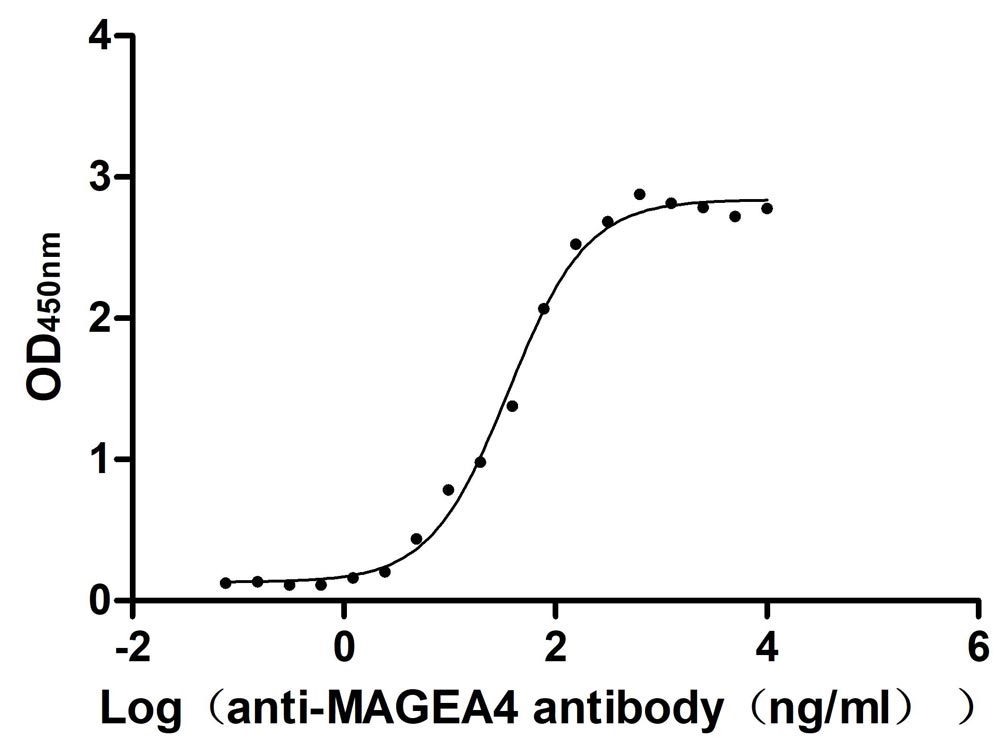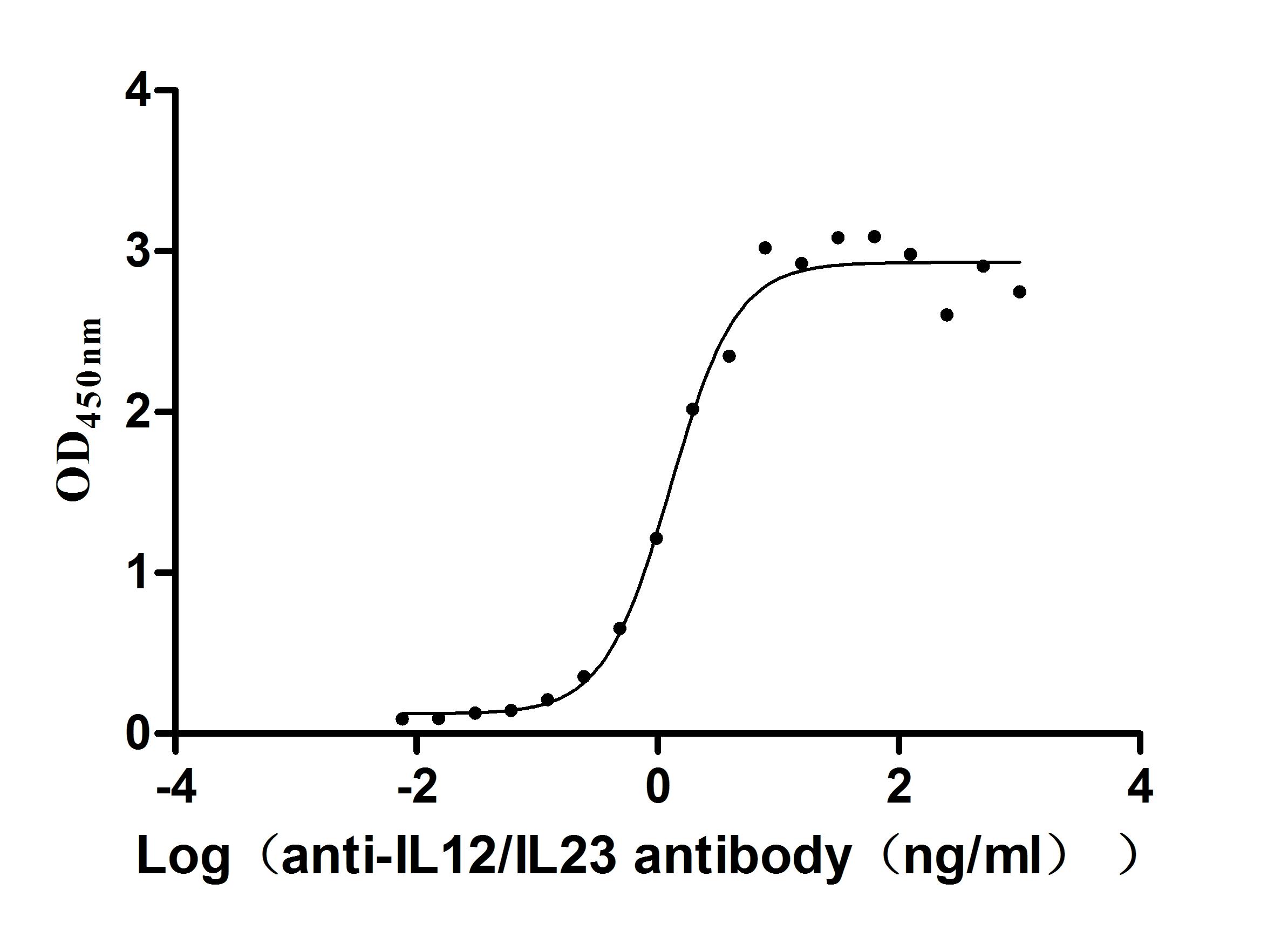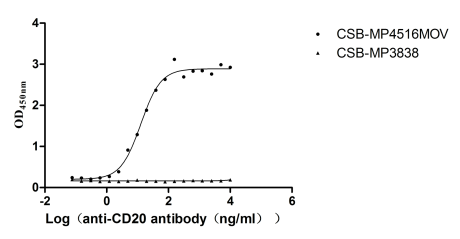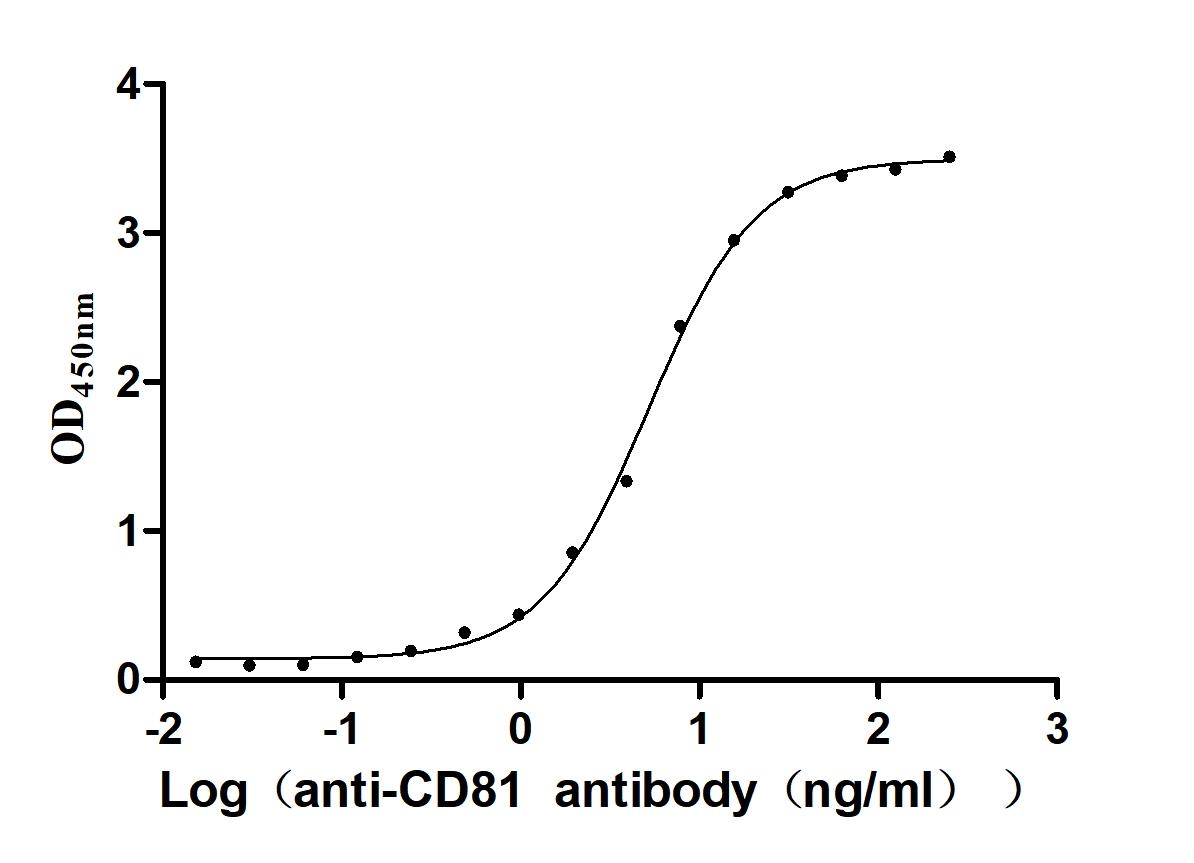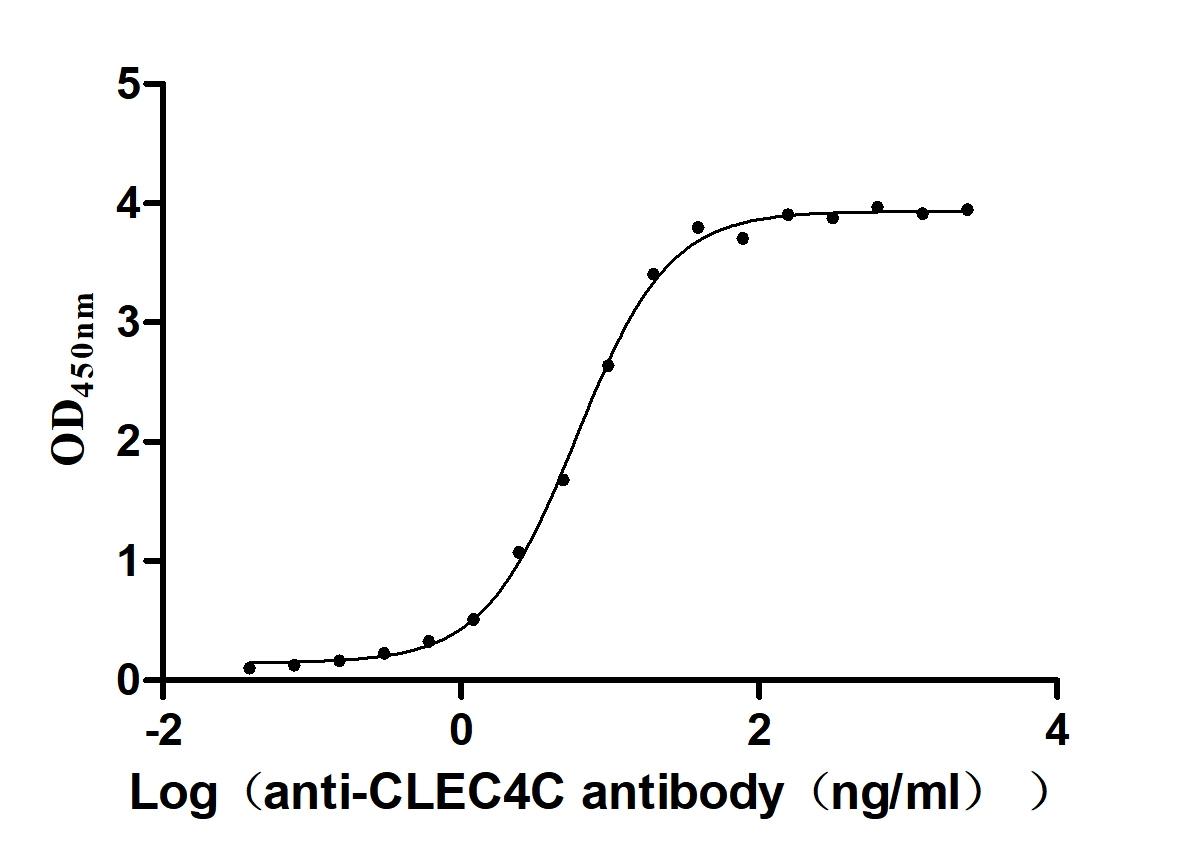Recombinant Saccharomyces cerevisiae AP-1-like transcription factor YAP1 (YAP1), partial
-
中文名稱:釀酒酵母YAP1重組蛋白
-
貨號:CSB-YP323980SVG
-
規格:
-
來源:Yeast
-
其他:
-
中文名稱:釀酒酵母YAP1重組蛋白
-
貨號:CSB-EP323980SVG
-
規格:
-
來源:E.coli
-
其他:
-
中文名稱:釀酒酵母YAP1重組蛋白
-
貨號:CSB-EP323980SVG-B
-
規格:
-
來源:E.coli
-
共軛:Avi-tag Biotinylated
E. coli biotin ligase (BirA) is highly specific in covalently attaching biotin to the 15 amino acid AviTag peptide. This recombinant protein was biotinylated in vivo by AviTag-BirA technology, which method is BriA catalyzes amide linkage between the biotin and the specific lysine of the AviTag.
-
其他:
-
中文名稱:釀酒酵母YAP1重組蛋白
-
貨號:CSB-BP323980SVG
-
規格:
-
來源:Baculovirus
-
其他:
-
中文名稱:釀酒酵母YAP1重組蛋白
-
貨號:CSB-MP323980SVG
-
規格:
-
來源:Mammalian cell
-
其他:
產品詳情
-
純度:>85% (SDS-PAGE)
-
基因名:
-
Uniprot No.:
-
別名:YAP1; PAR1; PDR4; SNQ3; YML007W; YM9571.12AP-1-like transcription factor YAP1; Phenanthroline resistance protein PAR1; Pleiotropic drug resistance protein PDR4
-
種屬:Saccharomyces cerevisiae (strain ATCC 204508 / S288c) (Baker's yeast)
-
蛋白長度:Partial
-
蛋白標簽:Tag?type?will?be?determined?during?the?manufacturing?process.
The tag type will be determined during production process. If you have specified tag type, please tell us and we will develop the specified tag preferentially. -
產品提供形式:Lyophilized powder
Note: We will preferentially ship the format that we have in stock, however, if you have any special requirement for the format, please remark your requirement when placing the order, we will prepare according to your demand. -
復溶:We recommend that this vial be briefly centrifuged prior to opening to bring the contents to the bottom. Please reconstitute protein in deionized sterile water to a concentration of 0.1-1.0 mg/mL.We recommend to add 5-50% of glycerol (final concentration) and aliquot for long-term storage at -20℃/-80℃. Our default final concentration of glycerol is 50%. Customers could use it as reference.
-
儲存條件:Store at -20°C/-80°C upon receipt, aliquoting is necessary for mutiple use. Avoid repeated freeze-thaw cycles.
-
保質期:The shelf life is related to many factors, storage state, buffer ingredients, storage temperature and the stability of the protein itself.
Generally, the shelf life of liquid form is 6 months at -20°C/-80°C. The shelf life of lyophilized form is 12 months at -20°C/-80°C. -
貨期:Delivery time may differ from different purchasing way or location, please kindly consult your local distributors for specific delivery time.Note: All of our proteins are default shipped with normal blue ice packs, if you request to ship with dry ice, please communicate with us in advance and extra fees will be charged.
-
注意事項:Repeated freezing and thawing is not recommended. Store working aliquots at 4°C for up to one week.
-
Datasheet :Please contact us to get it.
相關產品
靶點詳情
-
功能:Transcription activator involved in oxidative stress response and redox homeostasis. Regulates the transcription of genes encoding antioxidant enzymes and components of the cellular thiol-reducing pathways, including the thioredoxin system (TRX2, TRR1), the glutaredoxin system (GSH1, GLR1), superoxide dismutase (SOD1, SOD2), glutathione peroxidase (GPX2), and thiol-specific peroxidases (TSA1, AHP1). The induction of some of these genes requires the cooperative action of both, YAP1 and SKN7. Preferentially binds to promoters with the core binding site 5'-TTA[CG]TAA-3'. Activity of the transcription factor is controlled through oxidation of specific cysteine residues resulting in the alteration of its subcellular location. Oxidative stress (as well as carbon stress, but not increased temperature, acidic pH, or ionic stress) induces nuclear accumulation and as a result YAP1 transcriptional activity. Activation by hydrogen peroxide or thiol-reactive chemicals elicit distinct adaptive gene responses. Nuclear export is restored when disulfide bonds are reduced by thioredoxin (TRX2), whose expression is controlled by YAP1, providing a mechanism for negative autoregulation. When overexpressed, YAP1 confers pleiotropic drug-resistance and increases cellular tolerance to cadmium, iron chelators and zinc.
-
基因功能參考文獻:
- The deletion of transcription factors Yap1p or Skn7p was sufficient to disrupt the establishment of the second degradation phase of hydrogen peroxide, but not the initial phase. PMID: 27742413
- Yap1 and Skn7 genetically interact with Rad51 in response to oxidative stress and DNA double-strand break in Saccharomyces cerevisiae. PMID: 27838435
- Repression of SOD2 prevents ethanol-induced relocalization of yeast hydrogen peroxide-sensing transcription factor Yap1p, one of the key stress resistance proteins. Analysis of the ethanol sensitivities of the cells lacking Sod2p, Yap1p, or both indicated that the two proteins act in the same pathway. PMID: 27864171
- Yap1p positively regulates ATG15 expression. PMID: 27543826
- yap1 mutant is more sensitive to chemicals than wild-type cells and that the susceptible individuals carrying the YAP1-like gene defect may enhance risk to chemical exposure. PMID: 26389527
- We further show that, in a scenario where the activity of Yap1 or Rox1 is compromised, cells activate post-transcriptional mechanisms, involving the exoribonuclease Xrn1, to compensate the derepression of FET4 PMID: 26063801
- YAP1 might play a role in regulating acetic acid production during fermentation. PMID: 23146134
- The growth of yeast strains that are null for the yeast activator protein-1 gene that regulates oxidative stress genes is exquisitely sensitive to visible light. PMID: 24297928
- Corruption of the Yap1-mediated DNA damage response influences cell survival and genomic stability in response to exposure to genotoxic agents. PMID: 22433435
- Data suggests that YAP1 over-expression affects glutathione accumulation at both its biosynthesis and substrate availability levels. PMID: 22009669
- We present here evidence for a DNA-independent interaction between the Skn7 and Yap1 proteins that involves the receiver domain of Skn7p and the cysteine-rich domains of Yap1. [Yap1] PMID: 21478431
- Distinct mechanisms of Yap1 activation by H(2)O(2) or thiol-reactive chemicals result in selective expression of protective genes. PMID: 20971184
- Yap1 protein is accumulated in the nucleus in response to nitrosative stress. PMID: 20632943
- data demonstrate that the dually disulfide-bonded Yap1 protein N- and C-cysteine-rich domains form a bifunctional protein domain controlling both nuclear localization and transcriptional activation PMID: 16219769
- Novel Yap1p and Skn7p binding sites responsible for activation of oxidative stress genes were identified in the CCP1 promoter. PMID: 16313629
- Yap1 degradation, which eventually leads to Swe1p and Cln2p upregulation, assures a G2 delay in response to a stress that causes activation of calcineurin. PMID: 16485023
- The expression pattern of four oxidative stress genes in a yap1, skn7 and wild-type strain and the sensitivity of the corresponding mutants exposed to oxidative stress conditions proved a role of Yap1p and Skn7p in the defence against singlet oxygen. PMID: 16862604
- at physiological ratios of Trx(ox)/Trx(red), the reduction of both the E(m) = -315 mV disulfide of Orp1 and the E(m) = -330 mV disulfide of Yap1 by either thioredoxin1 or thioredoxin2 would be thermodynamically possible. PMID: 17087494
- These results suggest both a mechanism wherein the H2O2 levels might be sensed by Yap1 and the way in which the NADPH levels might be maintained by altering the redox status of Yap1. PMID: 17707237
- Results point to an additional level of Yap1 contribution to arsenic stress responses by preventing oxidative damage in cells exposed to these compounds. PMID: 18439143
- Yeast mutants sod1Delta and yap1Delta fail to cause disease except in bli-3 worms which carry a mutation in a dual oxidase gene. PMID: 19502579
顯示更多
收起更多
-
亞細胞定位:Nucleus. Cytoplasm.
-
蛋白家族:BZIP family, YAP subfamily
-
數據庫鏈接:
KEGG: sce:YML007W
STRING: 4932.YML007W
Most popular with customers
-
Recombinant Human Secreted and transmembrane protein 1 (SECTM1), partial (Active)
Express system: Mammalian cell
Species: Homo sapiens (Human)
-
Recombinant Human Tyrosine-protein kinase Mer (MERTK), partial (Active)
Express system: Mammalian cell
Species: Homo sapiens (Human)
-
Recombinant Human Claudin-18.2 (CLDN18.2)-VLPs (Active)
Express system: Mammalian cell
Species: Homo sapiens (Human)
-
Recombinant Human Melanoma-associated antigen 4 (MAGEA4) (Active)
Express system: Mammalian cell
Species: Homo sapiens (Human)
-
Recombinant Human IL12B&IL12A Heterodimer Protein (Active)
Express system: Mammalian cell
Species: Homo sapiens (Human)
-
Recombinant Macaca fascicularis Membrane spanning 4-domains A1 (MS4A1)-VLPs (Active)
Express system: Mammalian cell
Species: Macaca fascicularis (Crab-eating macaque) (Cynomolgus monkey)
-
Recombinant Human CD81 antigen (CD81), partial (Active)
Express system: Mammalian cell
Species: Homo sapiens (Human)
-
Recombinant Macaca fascicularis C-type lectin domain family 4 member C(CLEC4C), partial (Active)
Express system: Mammalian cell
Species: Macaca fascicularis (Crab-eating macaque) (Cynomolgus monkey)


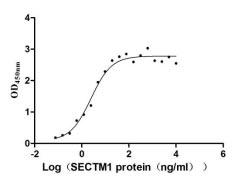
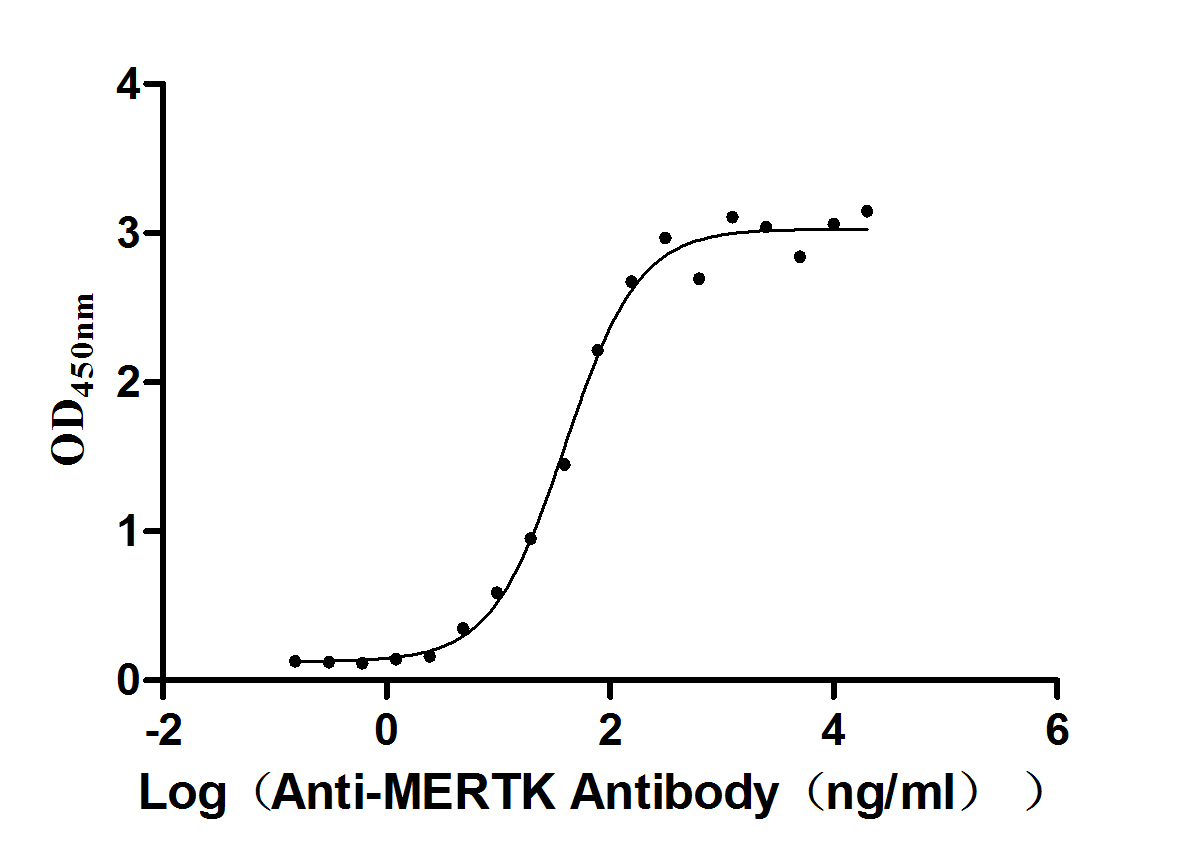
-AC1.jpg)
